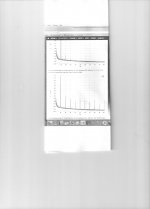love the idea.
Someone may turn it into a volume juggling act, and make a million bucks at dance parties. From DJ, to VJ, to Juggle Jockey.
Attachments
The MJW21196 (same transistor, plastic) has been tried: http://www.diyaudio.com/forums/solid-state/189599-my-little-cheap-circlophone-10.html#post2639264
Some useful info starting here:
http://www.diyaudio.com/forums/solid-state/189599-my-little-cheap-circlophone-21.html#post2690089
And of course, Daniel has created a nice builder's thread with lots of information, including dimensioning for rail voltage:
http://www.diyaudio.com/forums/soli...tion-parts-accessories-beginner-friendly.html
Measurements stay basically the same, and if you use transistors having a good gain flatness like the 21196, performances will improve somewhat
Thank you, Elvee.
This prototype is built in a didactic, "fair science" style. A practical, usable device would use hundreds of turns of 0.03mm wire, and the coils linear dimensions would be scaled down by a factor of ~10 to 100, that is a volume reduced by a 1,000 to 1,000,000 factor.So it is both distance and angle, thanks to your answer.
I really love the idea... and your prototype
While i'm asking myself questions about the way to schield the coils against external magnetic fields (Mu-metal ?) without adding distortion to the signal.
It seems very impratical, specially if we consider cross talk stereo problems and mechanical vibrations ones to solve, but all the fun of crazy DIY, "on the wild side".
That would make it much easier to shield effectively.
It is common in pro use to have more than one amplifier or other device connected to a single output without the use of distribution amplifiers. So a simple PA system with 4 subs and 8 mid high boxes using amplifiers with built in DSP would be a 500 ohm load.
yes... a lot of 'loop-thru' or 'pass-thru' jacks exist on much of the PA - Music gear (even on speaker enclosures - passive and active).
THx-RNMarsh
Last edited:
That reminds me of a variable inductor I designed for fine tuning L in cross-overs; might be used as transformer/volume control:
make 2 coils - thin layers... with one coil positioned inside the other. Rotate one with respect to the other and the phase will cancel signal all the way to zero when the two coils are rotated 180 degrees. no distortion but weak coupling unless a core is added. And bulky.
THx-RNMarsh
make 2 coils - thin layers... with one coil positioned inside the other. Rotate one with respect to the other and the phase will cancel signal all the way to zero when the two coils are rotated 180 degrees. no distortion but weak coupling unless a core is added. And bulky.
THx-RNMarsh
Last edited:
Trivial, again. Any serious designer knows. If not, he is an amateur.
PMA, I hope you are not one of those "i know everything" guys but you certainty act as one and It`s a pity because you are one smart and experienced fellow.
In other thread you said that SOTA would be "<0.001% anywhere, regardless amplitude and frequency" and that could be achieved with, as JC said, internal resistive load due to feedback resistors, and even better with modern low distortion op amps (working with class B OPS).
So, is it trivial or not?

I agree with JC in some points, we can`t measure everything or we don`t know what to measure... There are some things you could do for better sound and the standard measurements could be worse, and I`m not talking about bad tube amplifiers with sweet distortion colorations or Aleph-like constructions... It`s a perception world so we should be open minded I guess everybody knows this is NOT plain engineering job...
I disagree - it is a "plain engineering job" ... I see the "problem" as being that the wrong things are constantly being looked at as being the solution for the issues; and that how much progress has been made is measured in ways not sophisticated enough, by a long shot.It`s a perception world so we should be open minded I guess everybody knows this is NOT plain engineering job...
Once one pays attention to the areas which do really matter, to qualities which subjectively are very important, then very effective improvements can be made, using very straightforward engineering approaches ..
Last edited:
I'm not sure to fully understand-you, John. Feedback impedance should not be part of any OPA design, datasheets and application notes provided by the manufacturer ?When are you guys going to understand what I am worried about? I am NOT worrying so much about an external load, but mostly about an internal resistive load due to feedback resistors and loading from subsequent stages. This is PERMANENT, not negotiable.
What about CFAs, that use *very low* feedback impedance, they value playing a role in their bandwidth, while responses and distortion curves are provided in their datasheets for several values of them at several gain ?
If you mean that, because of this charge, some OPA are not designed to run in class A without an additional buffer included in the loop, even with *no* external charge ? That is for sure
I'm not sure to fully understand-you, John. Feedback impedance should not be part of any OPA design, datasheets and application notes provided by the manufacturer ?
What about CFAs, that use *very low* feedback impedance, they value playing a role in their bandwidth, while responses and distortion curves are provided in their datasheets for several values of them at several gain ?
If you mean that, because of this charge, some OPA are not designed to run in class A without an additional buffer included in the loop, even with *no* external charge ? That is for sure
Yes, that right on the paper (datasheet), BUT when you bias op amp`a output stage to class A (ccs to negative rail for instance) you`ll hear the differnce for shure. It will sound better.
I disagree - it is a "plain engineering job" ... I see the "problem" as being that the wrong things are constantly being looked at as being the solution for the issues; and that how much progress has been made is measured in ways not sophisticated enough, by a long shot.
Once one pays attention to the areas which do really matter, to qualities which subjectively are very important, then very effective improvements can be made, using very straightforward engineering approaches ..
That is what I said : we don`t know what to measure (in some cases).
Look carefully at Ron's paper and you will gain new understanding.
New, really?
- Status
- Not open for further replies.
- Home
- Member Areas
- The Lounge
- John Curl's Blowtorch preamplifier part II

